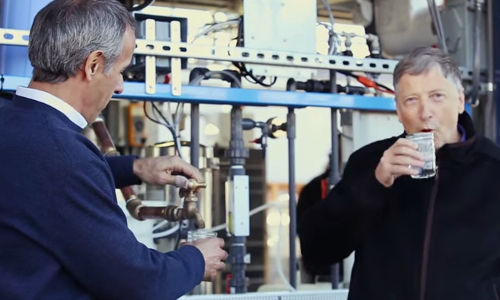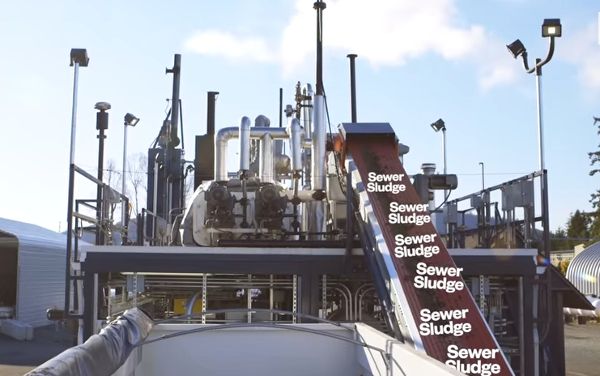

We know that Bill Gates made a lot of money from Microsoft and since he left the company, he’s been very busy spending it.
One of the latest projects he’s funding is the Omniprocessor, which turns human waste into renewable energy and drinkable water. How drinkable? Gates demonstrated by drinking a glassful himself.
“I watched the piles of feces go up the conveyer belt and drop into a large bin,” said Gates. “They made their way through the machine, getting boiled and treated. A few minutes later I took a long taste of the end result: a glass of delicious drinking water. The occasion was a tour of a facility that burns human waste and produces water and electricity (plus a little ash). I have visited lots of similar sites, like power plants and paper mills, so when I heard about this one—it’s part of the Gates Foundation’s effort to improve sanitation in poor countries—I was eager to check it out. The water tasted as good as any I’ve had out of a bottle. And having studied the engineering behind it, I would happily drink it every day. It’s that safe.”
The Omniprocessor was created to simultaneously address the issue of poor sanitation in developing countries and their frequent lack of adequate drinking water and electrical power. Waste piles up in latrines or in open fields, or it’s trucked away and dumped somewhere, maybe in a nearby body of water, causing the spread of disease. But western-style toilets require sewage lines and treatment plants that aren’t feasible in many places. The Omniprocessor, designed by Seattle-area engineering firm Janicki Bioenergy, reinvents the sewage treatment plant.
In the Omniprocessor, sewer sludge is fed into tubes and boiled, producing water vapor which is purified for drinking. The dry solids are then fed into a fire, which creates steam to fuel a steam engine that drives an electricity-producing generator. That energy in turn fuels the machine, with excess available for other needs. The water burns the waste at temperatures of 1000 degrees Celsius, so high that there’s no smell. The next generation of the machine could process waste from 100,000 people and produce about 22,700 gallons of drinkable water and 250 kilowatts of energy a day.
“If we get it right, it will be a good example of how philanthropy can provide seed money that draws bright people to work on big problems, eventually creating a self-supporting industry,” said Gates. “Our foundation is funding Janicki to do the development. It’s really amazing to see how they’ve embraced the work; founder Peter Janicki and his family have traveled to Africa and India multiple times so they can see the scope of the problem. Our goal is to make the processors cheap enough that entrepreneurs in low- and middle-income countries will want to invest in them and then start profitable waste-treatment businesses.”
Those entrepreneurs would make money from the sludge they remove from the environment, and the water and electricity they create.
Later this year, Janicki will set up the first Omniprocessor in the field in Dakar, Senegal.
“They’ll study everything from how you connect with the local community to how you pick the most convenient location,” said Gates. “They will also test one of the coolest things I saw on my tour: a system of sensors and webcams that will let Janicki’s engineers control the processor remotely and communicate with the team in Dakar so they can diagnose any problems that come up. If things go well in Senegal, we’ll start looking for partners in the developing world.”
“The history of philanthropy is littered with well-intentioned inventions that never deliver on their promise,” he said. “Hopefully, these early steps will help us make sure the Omniprocessor doesn’t join the list.”
YOU MIGHT ALSO LIKE
Clean Drinking Water Should Be a Human Right
Developing Countries Invest in Renewables Twice the Pace of Industrialized Nations
World Water Week: 7 Reasons to Claim Water for Life, Not Coal

 233k
233k  41k
41k  Subscribe
Subscribe 
